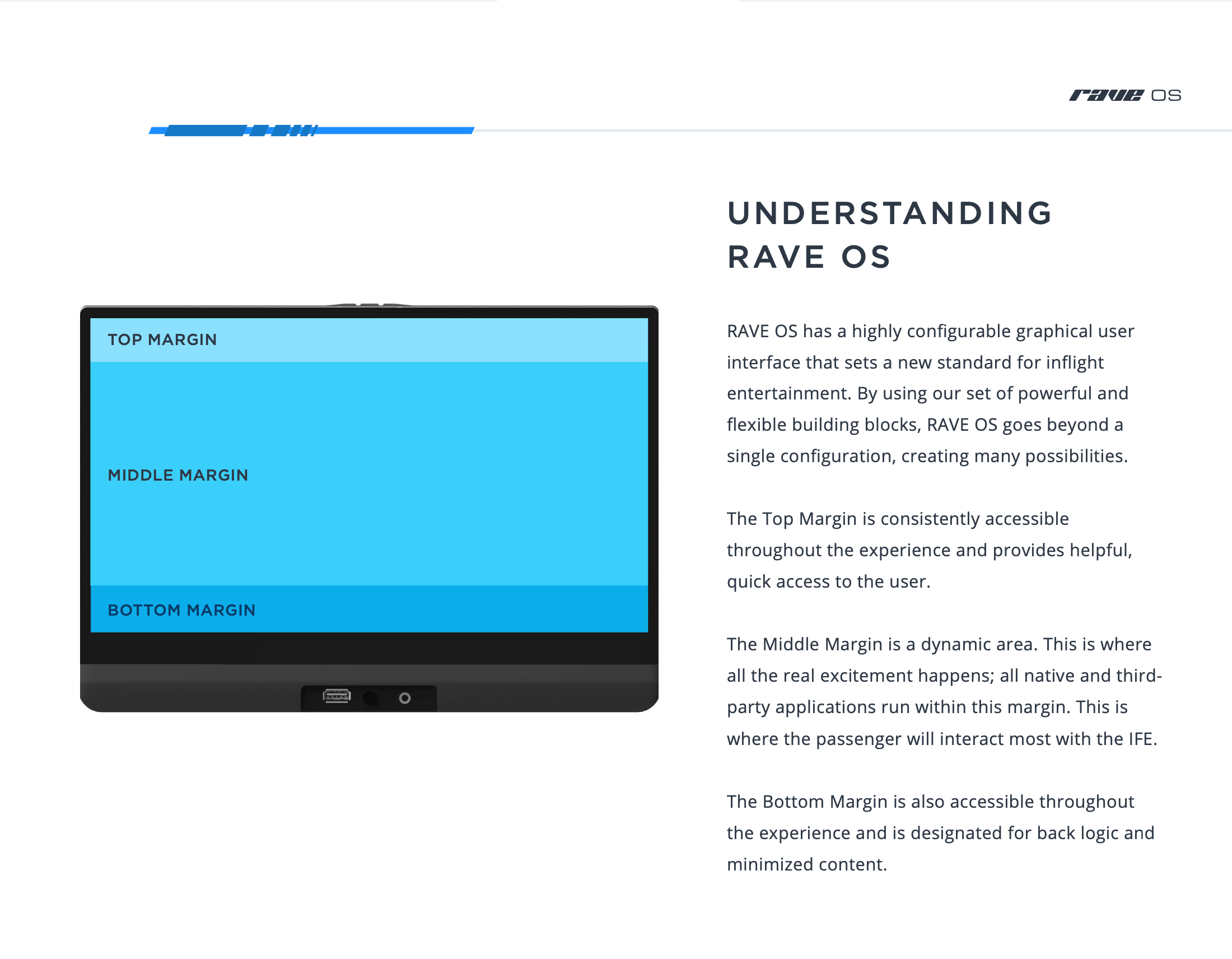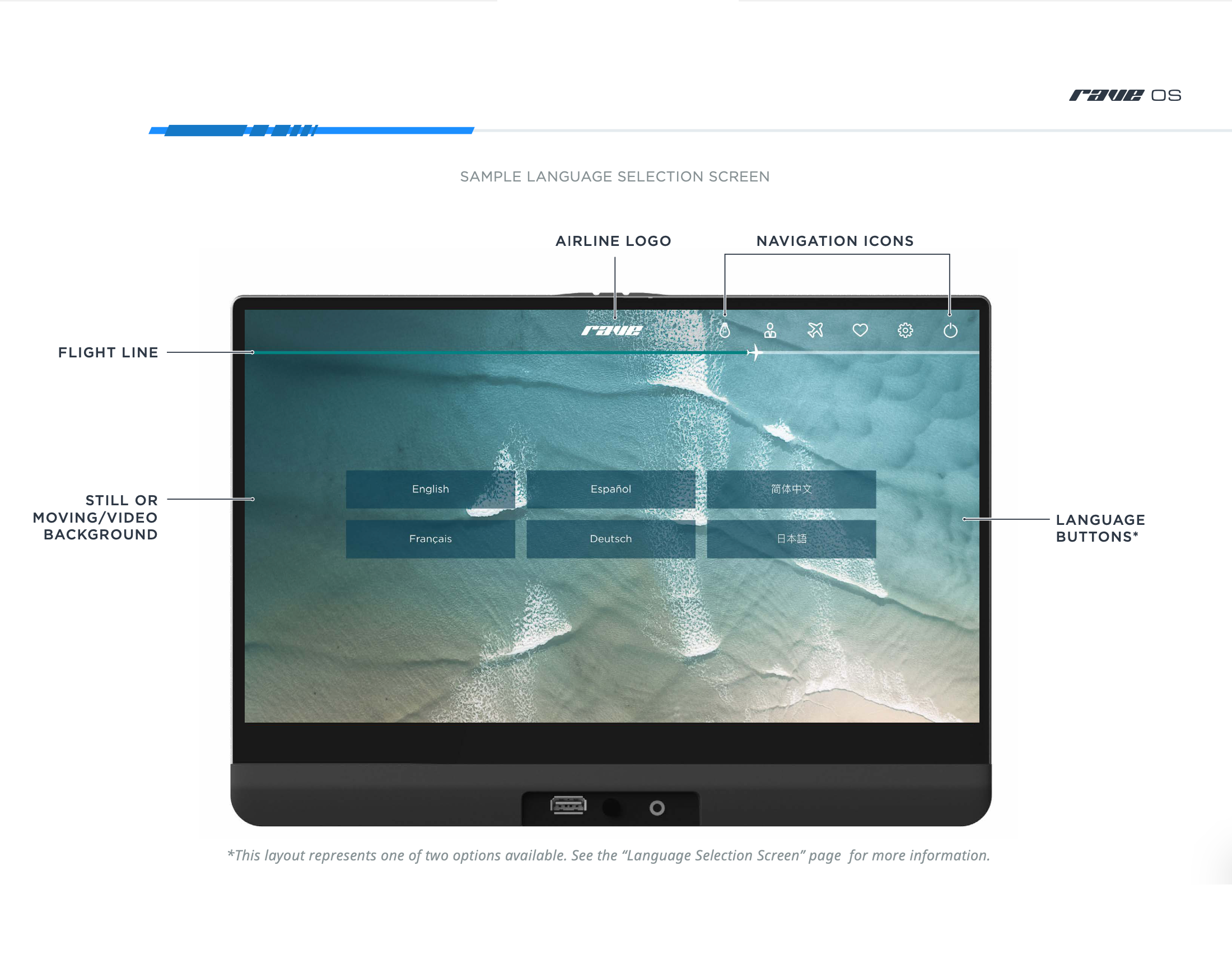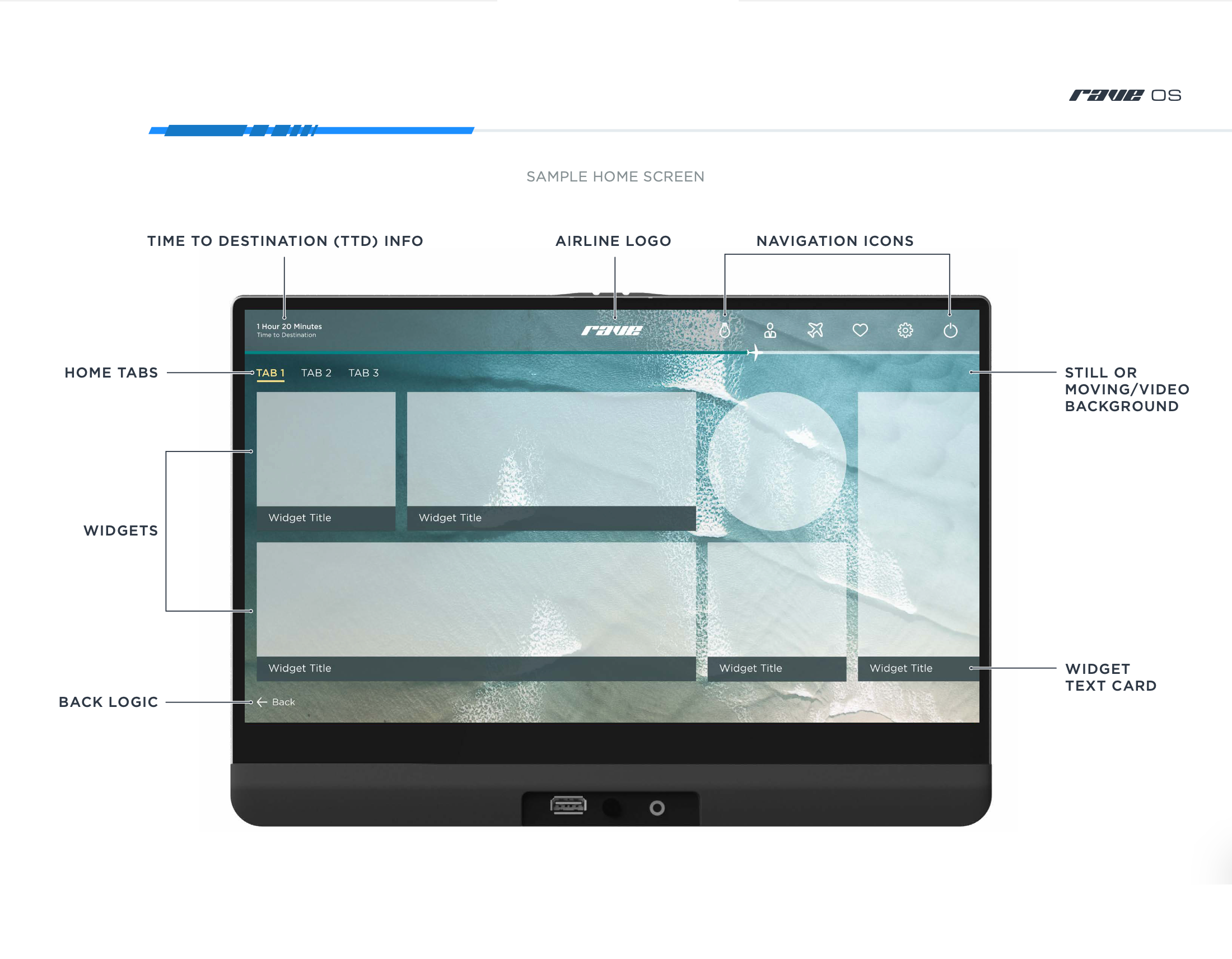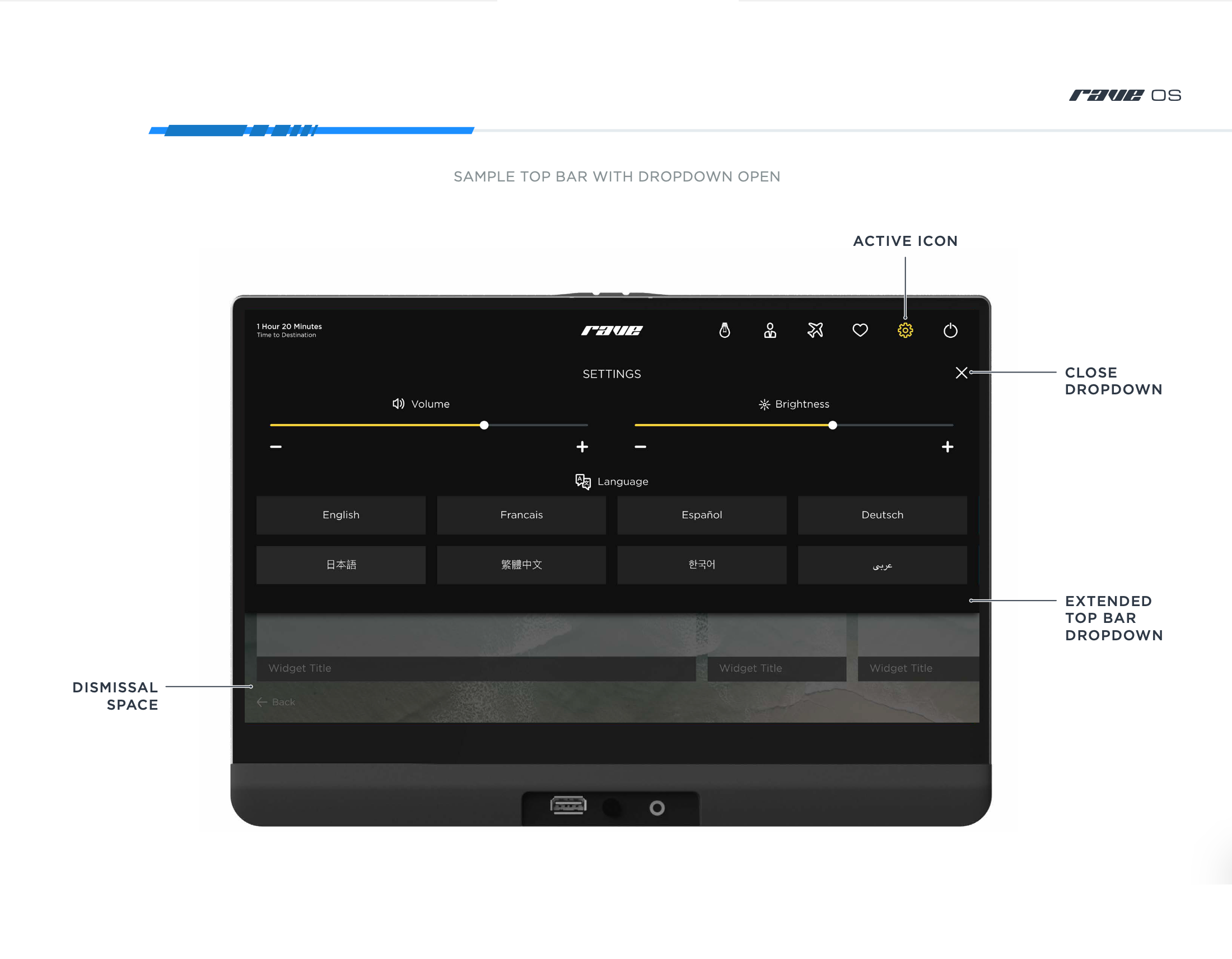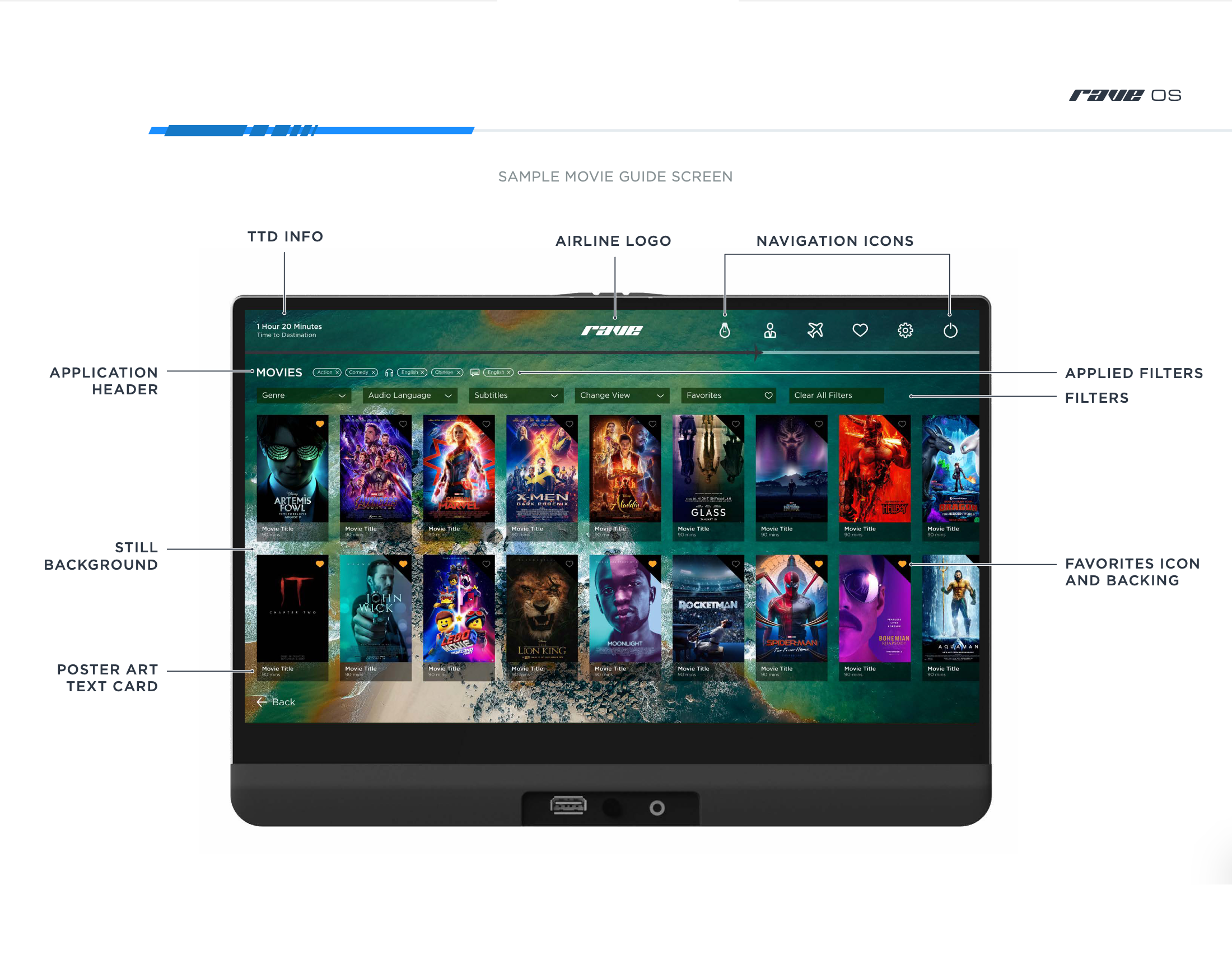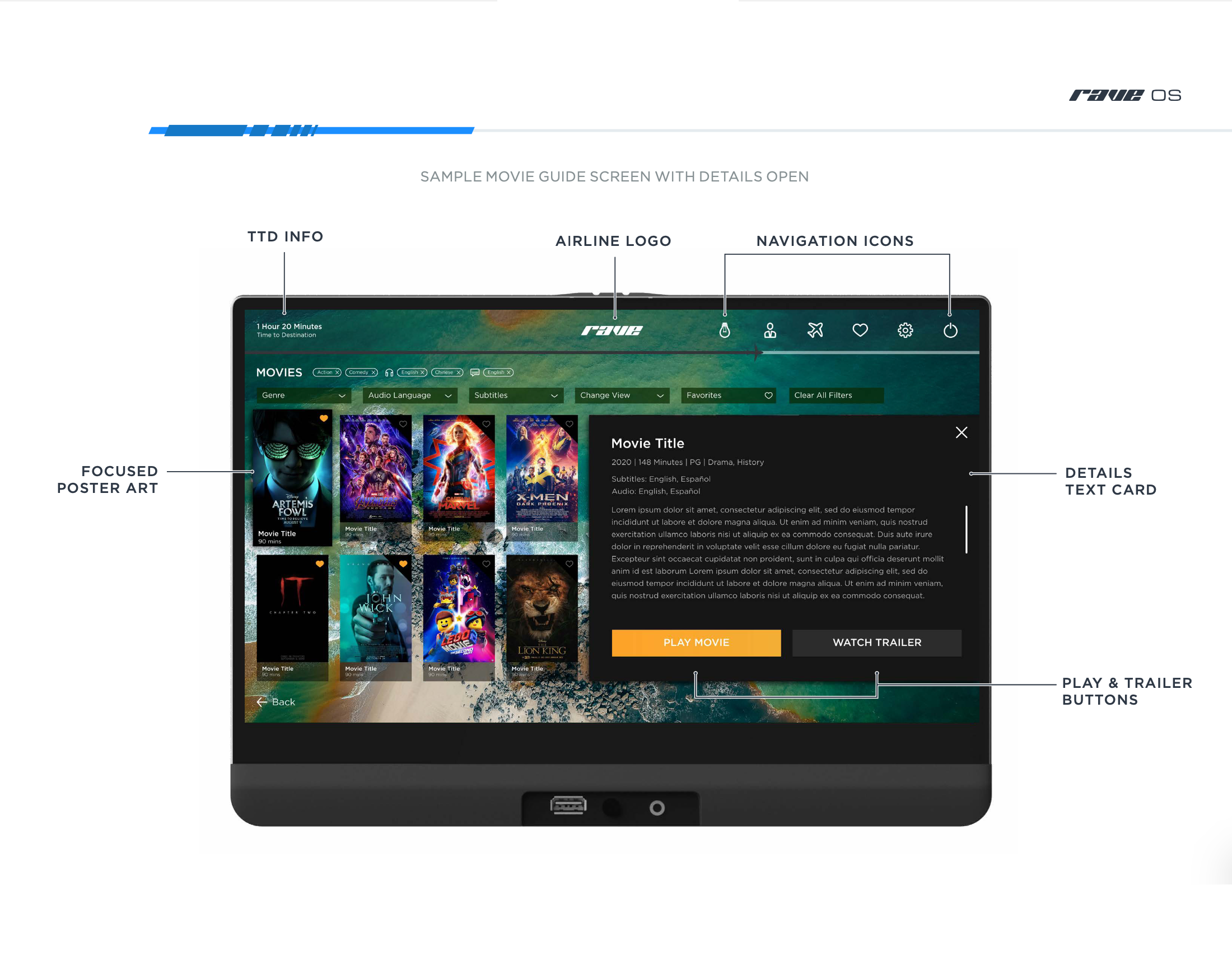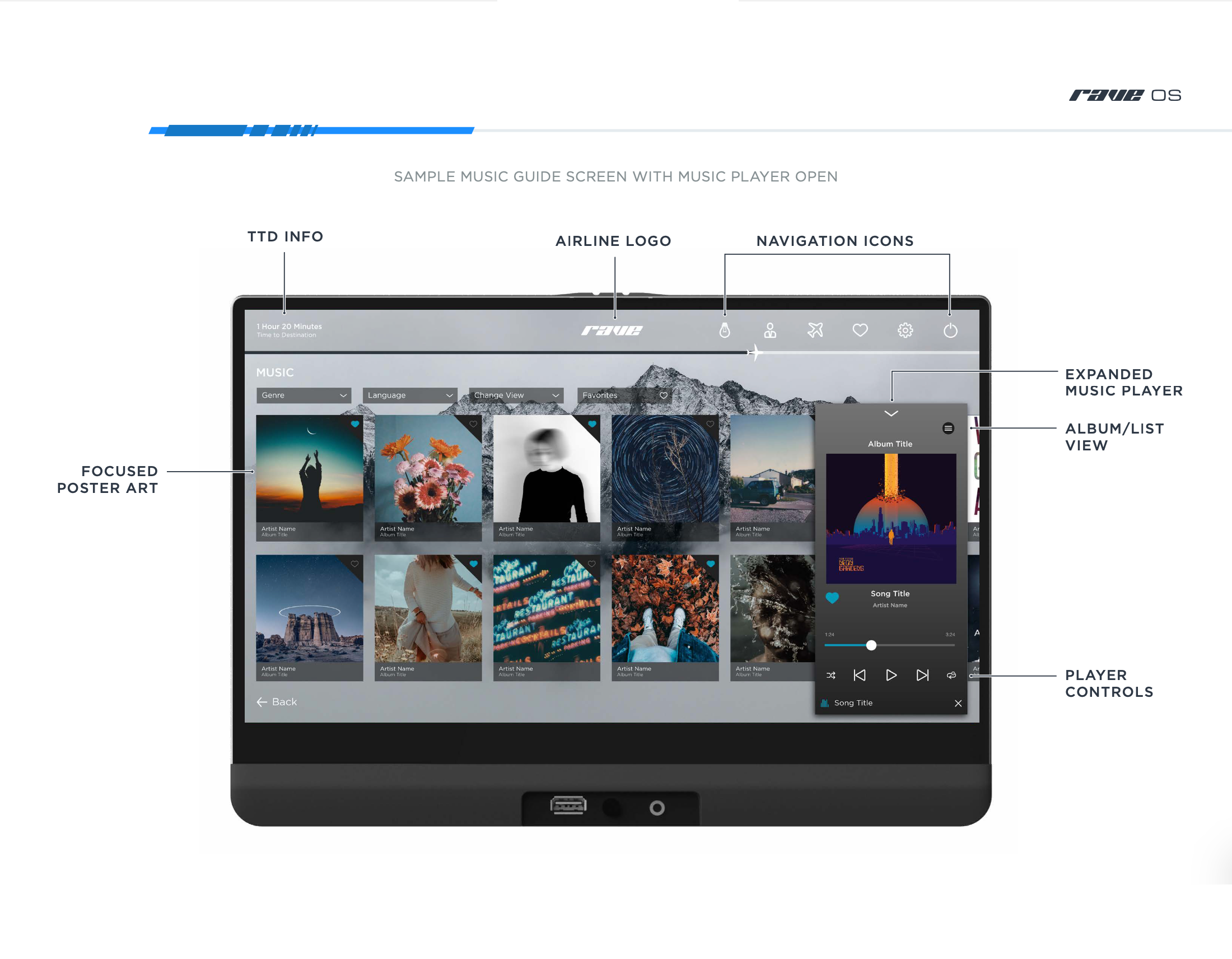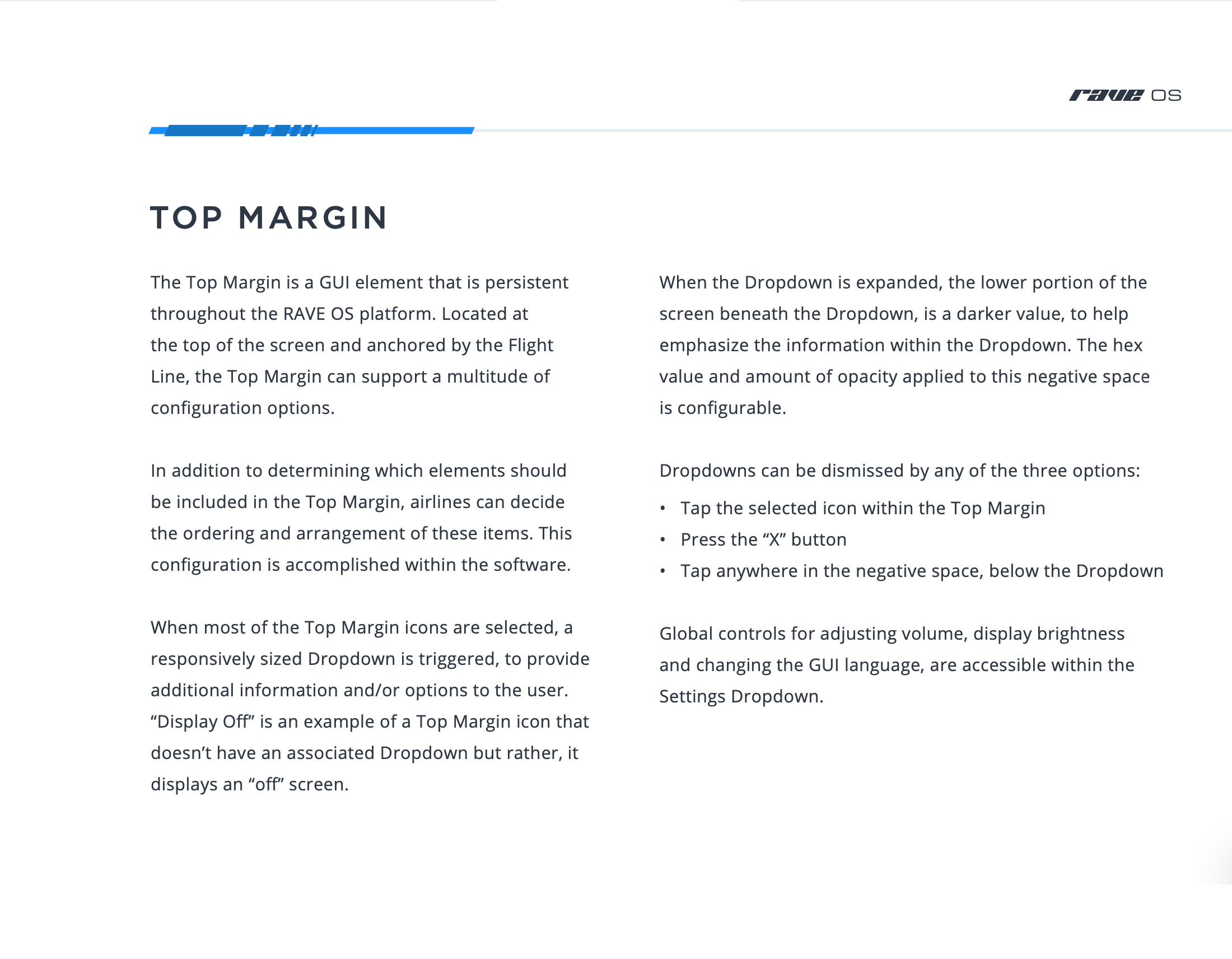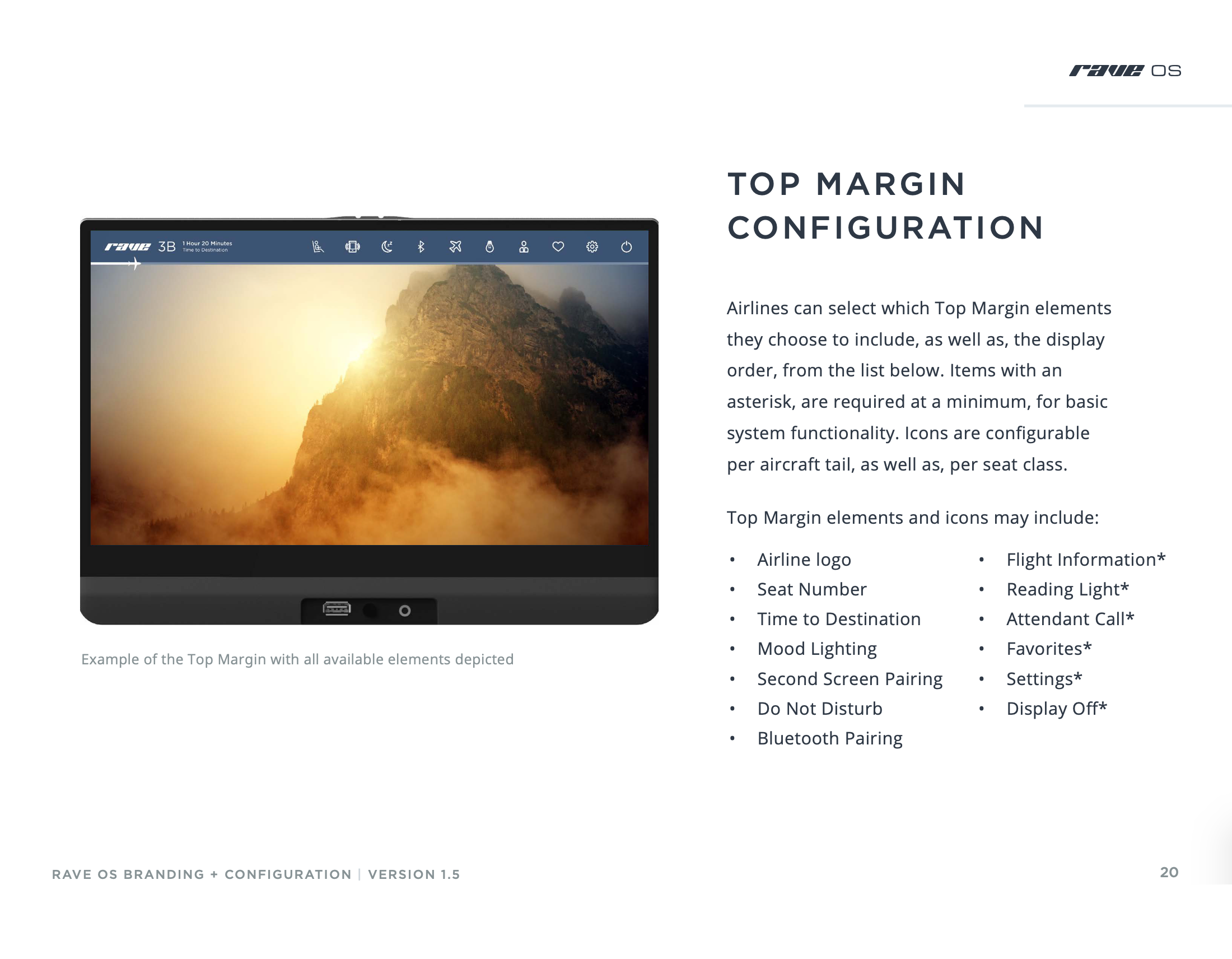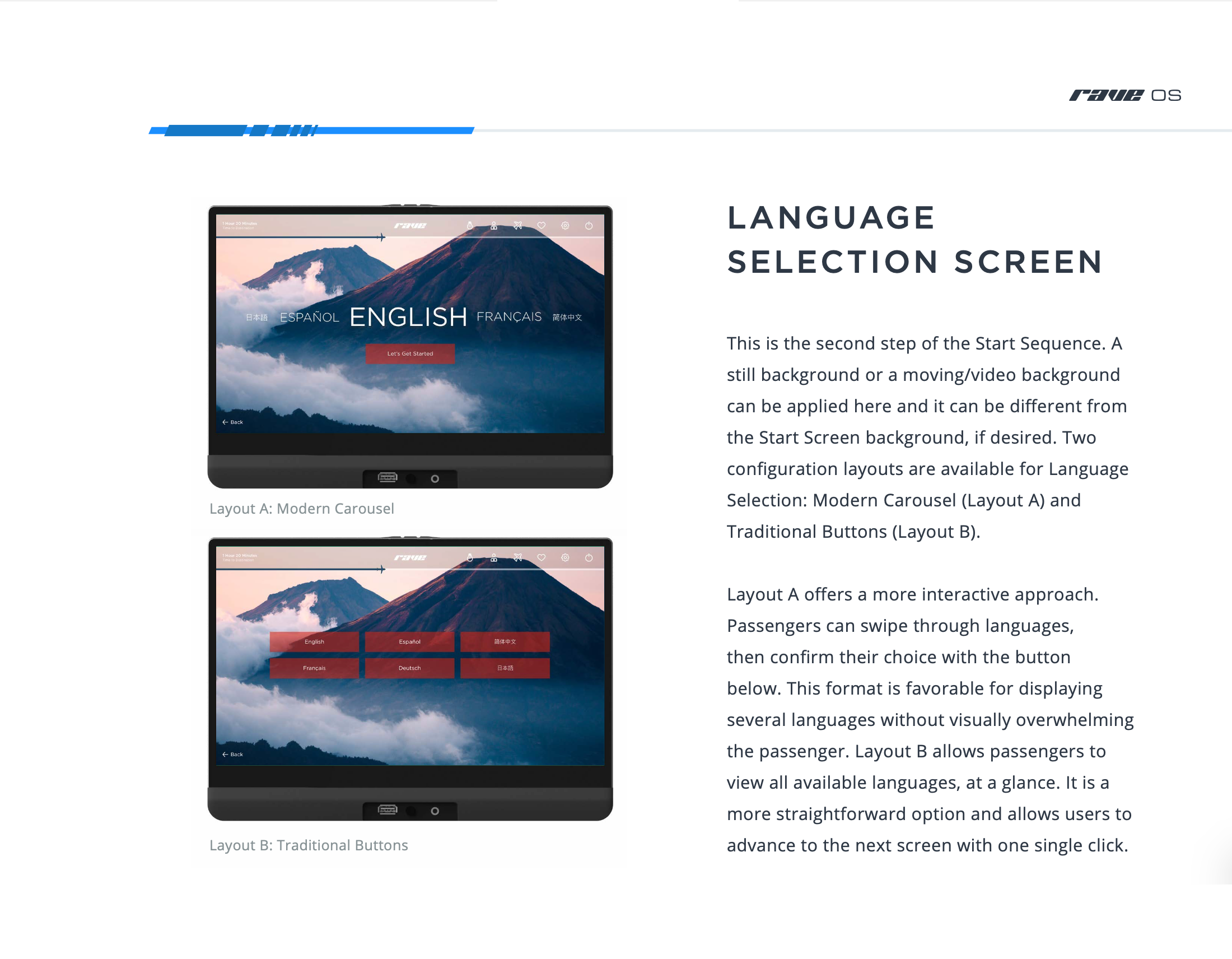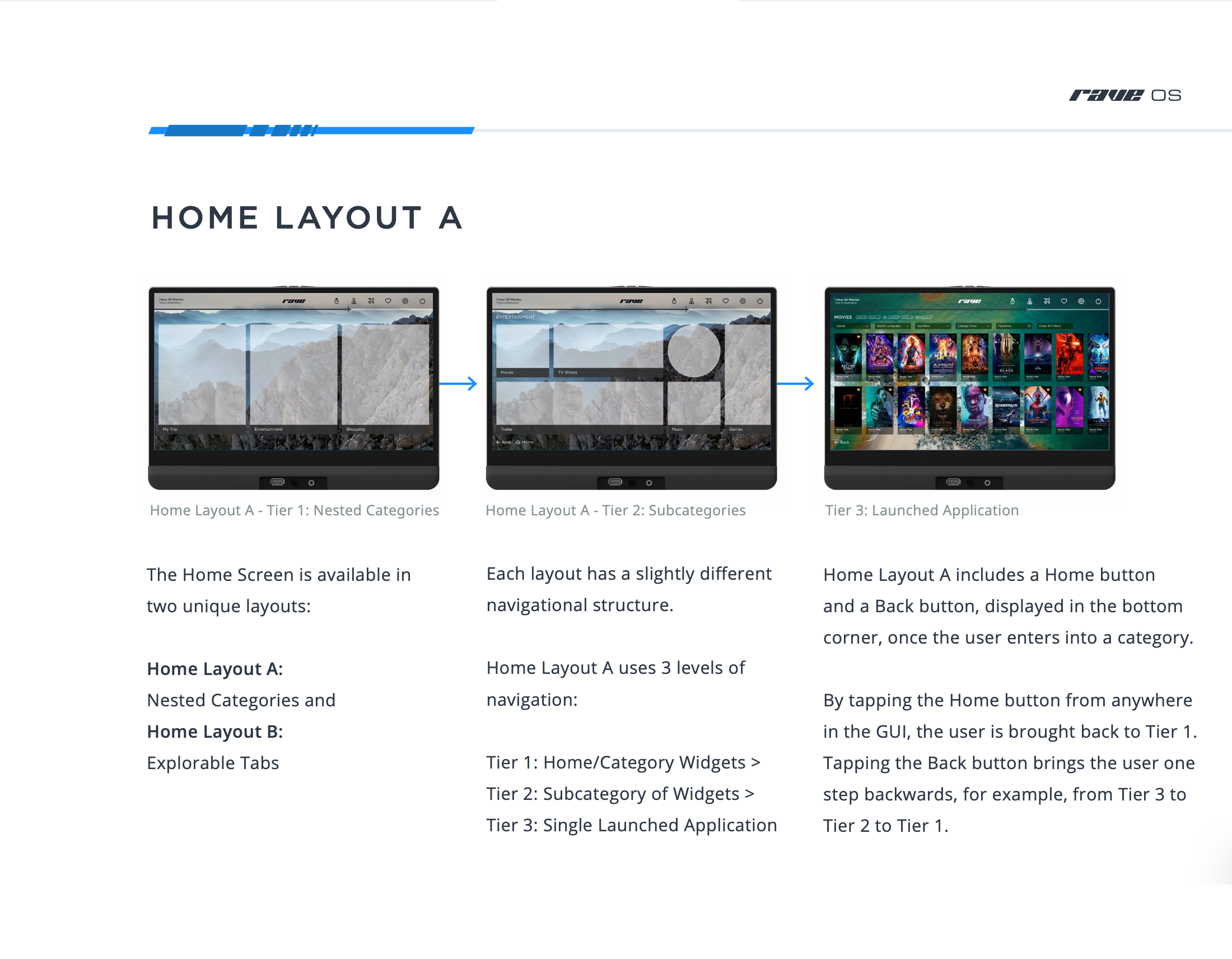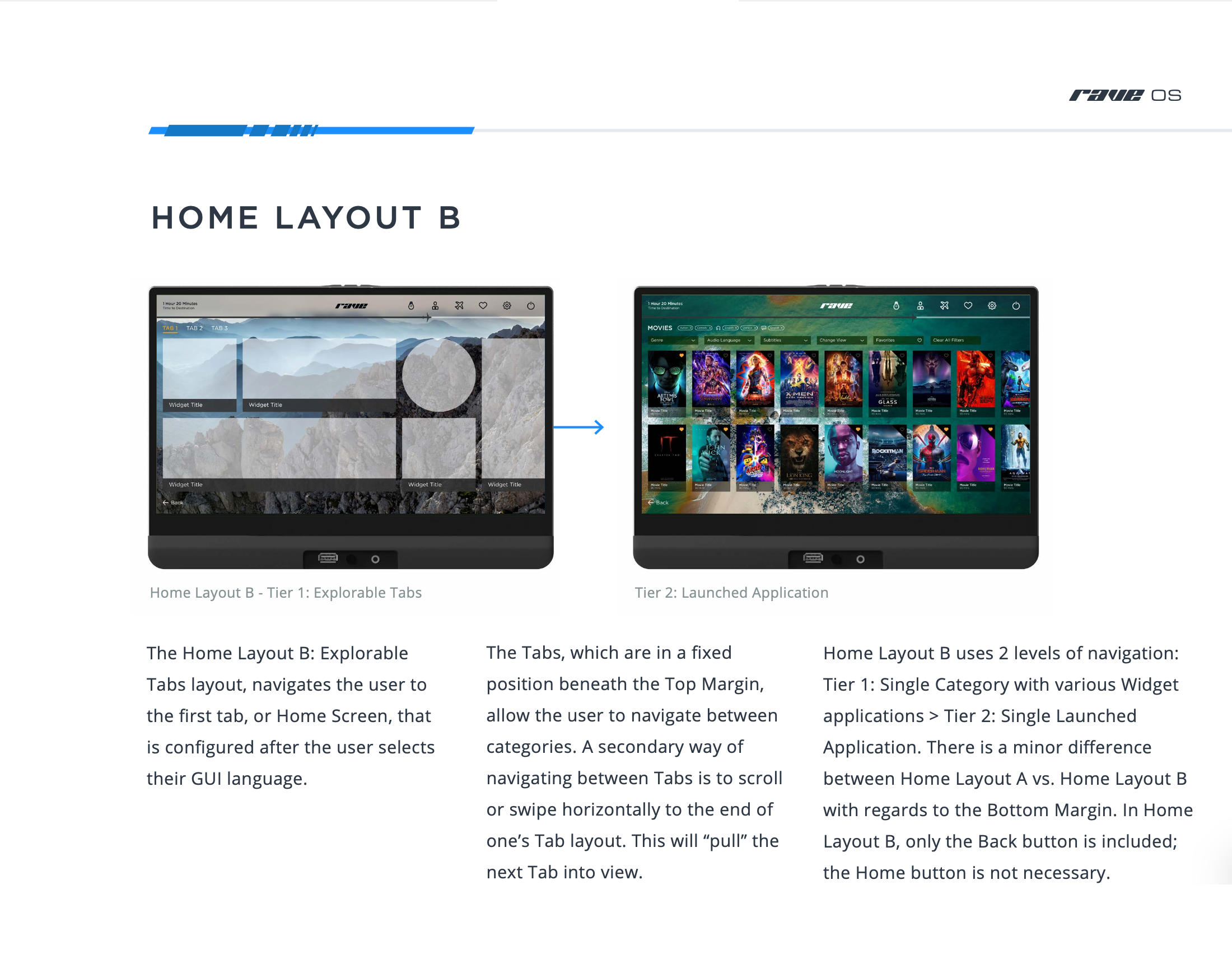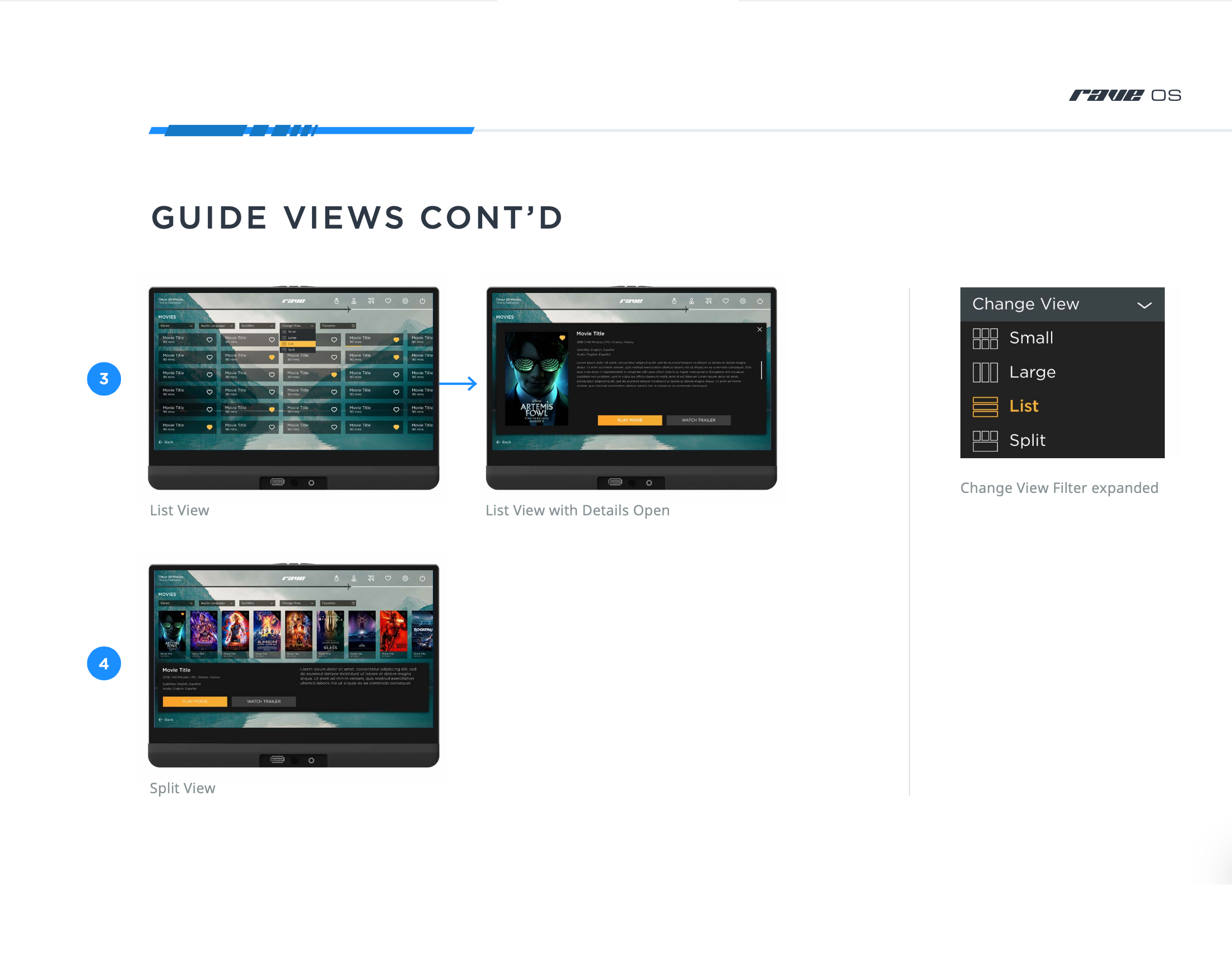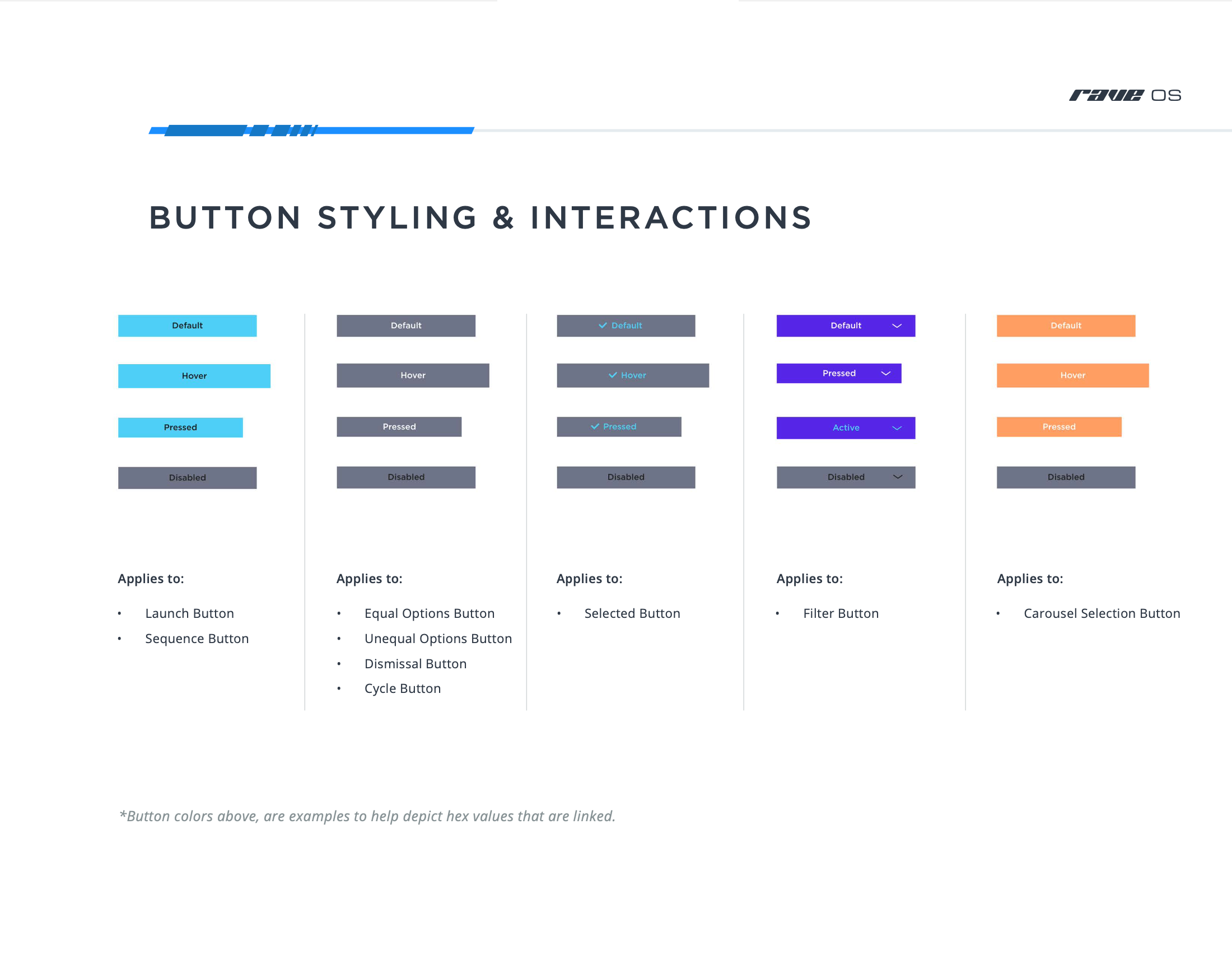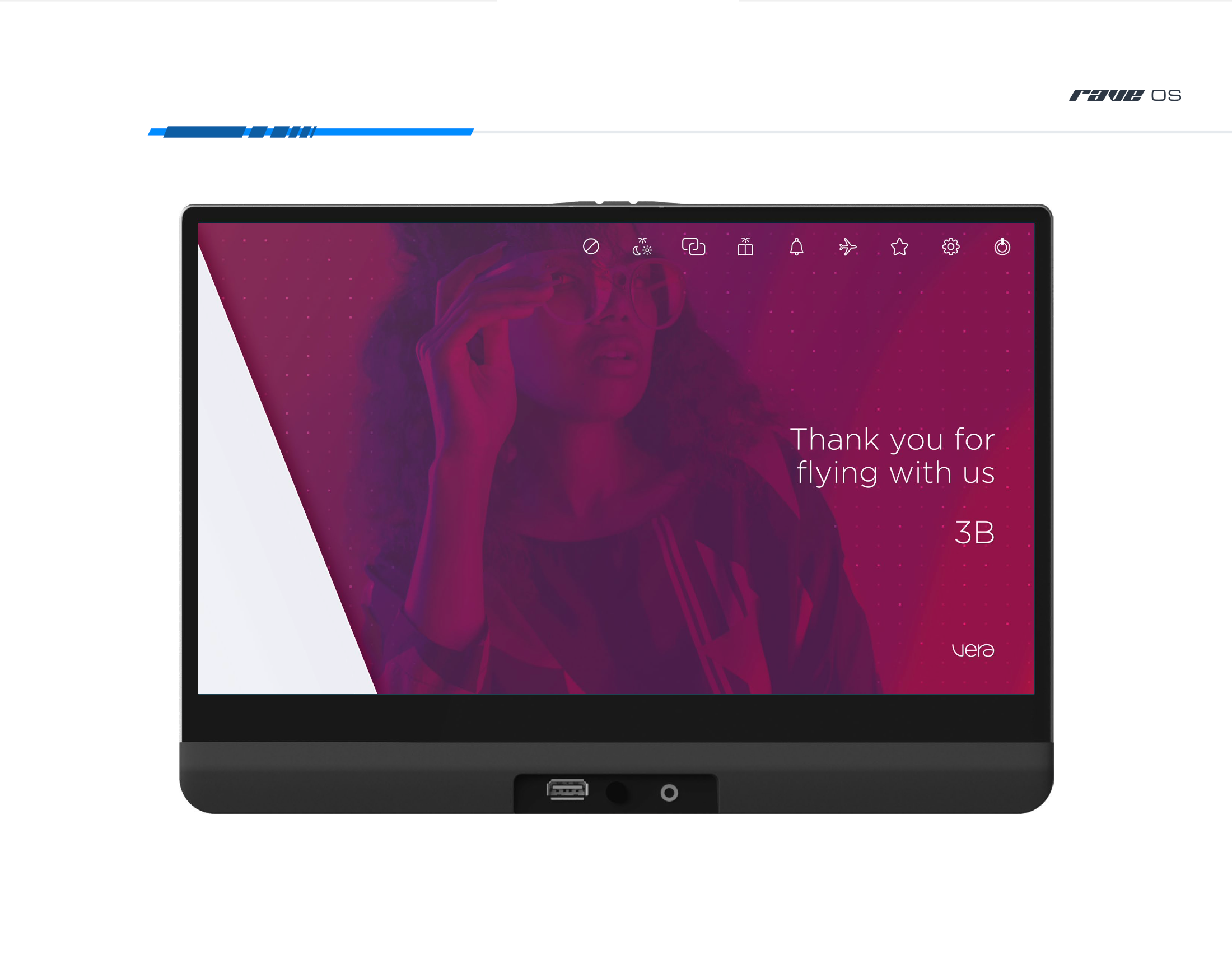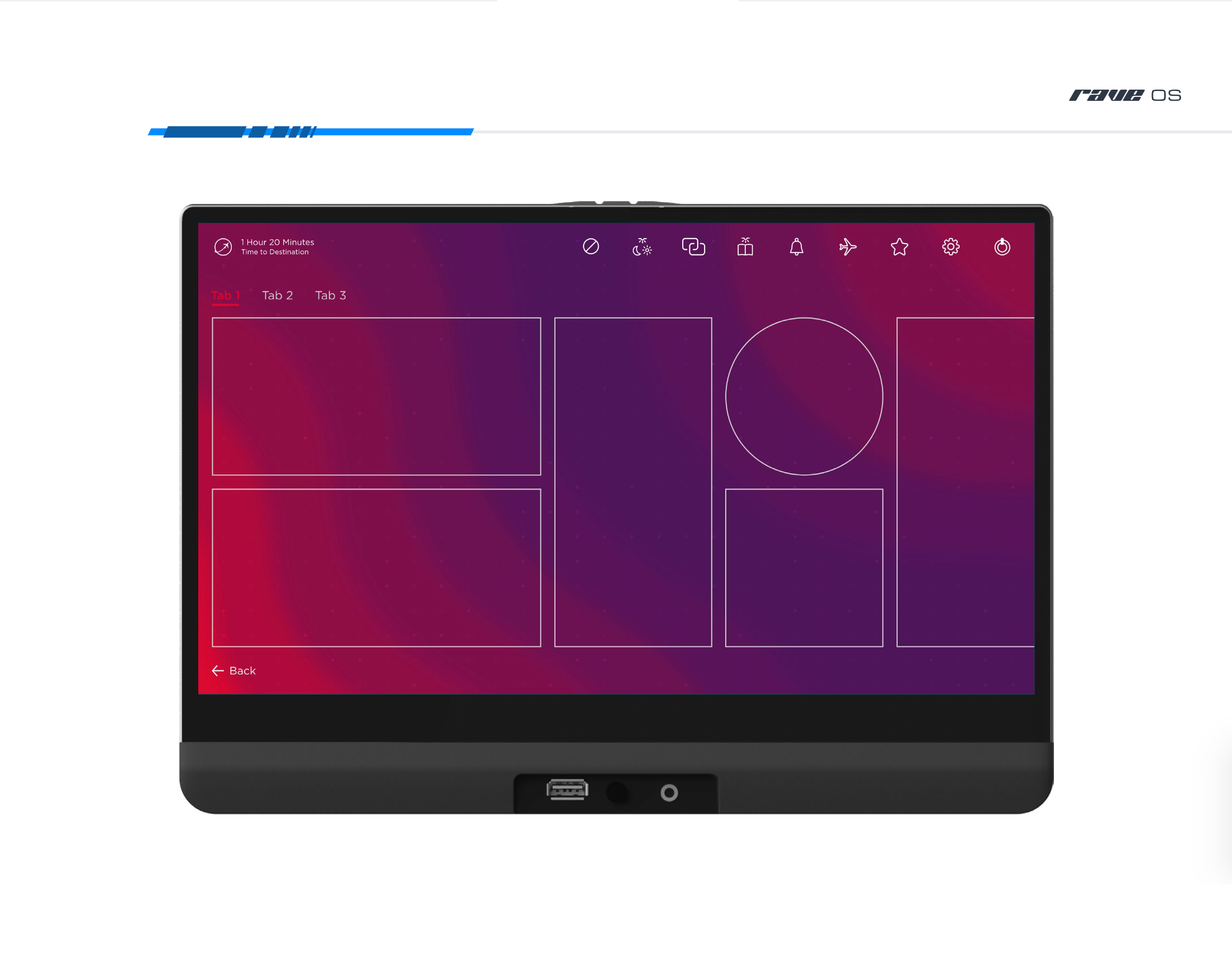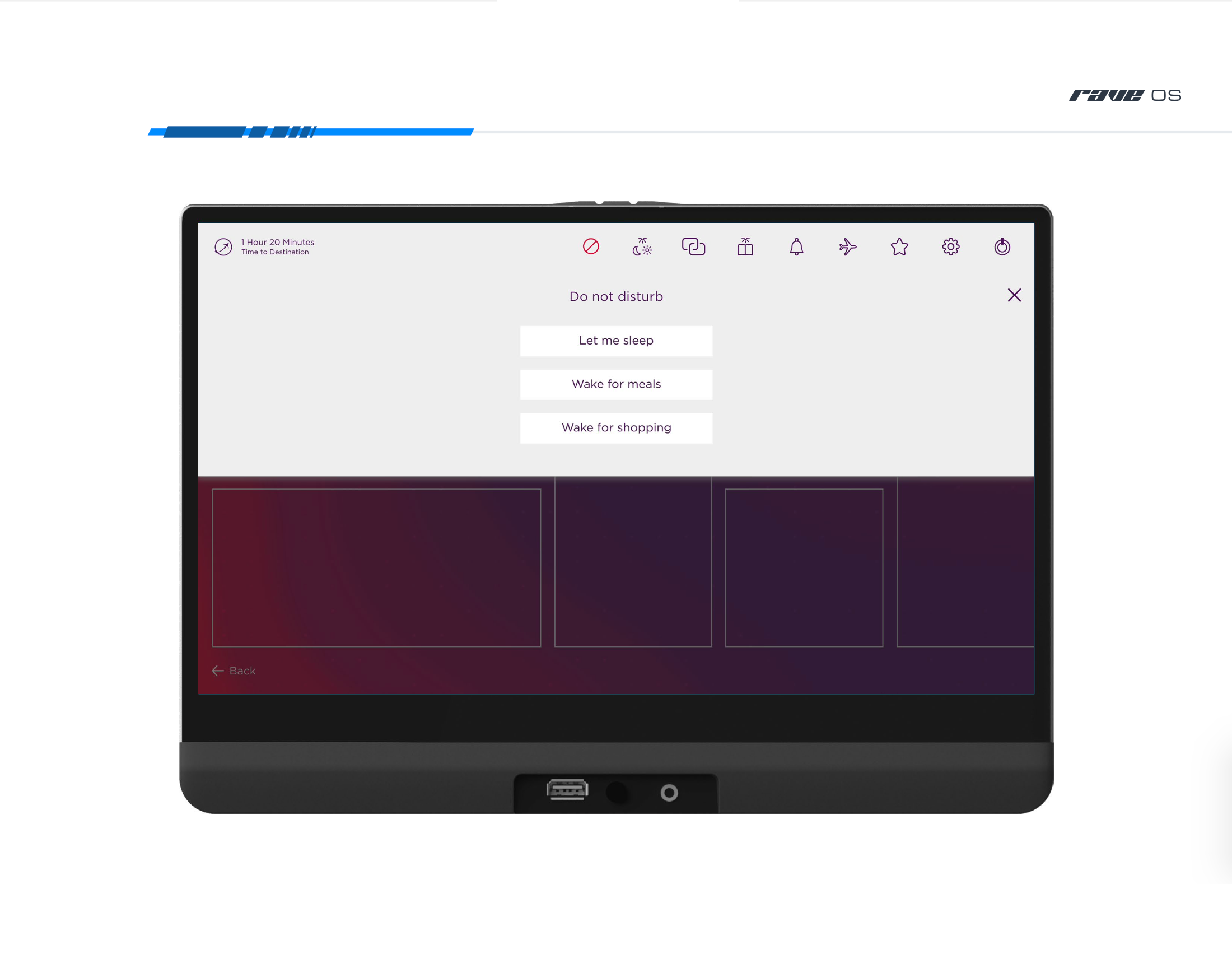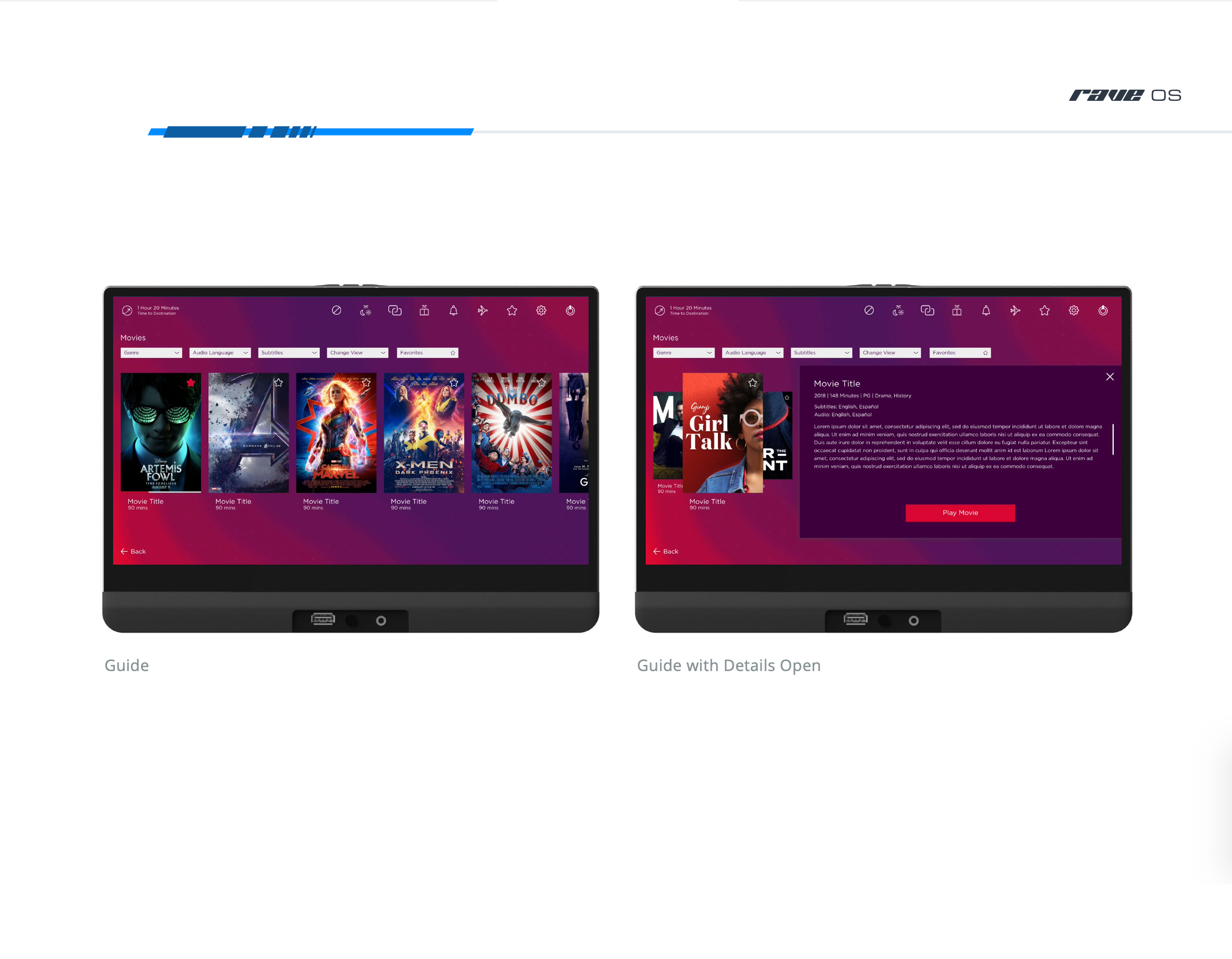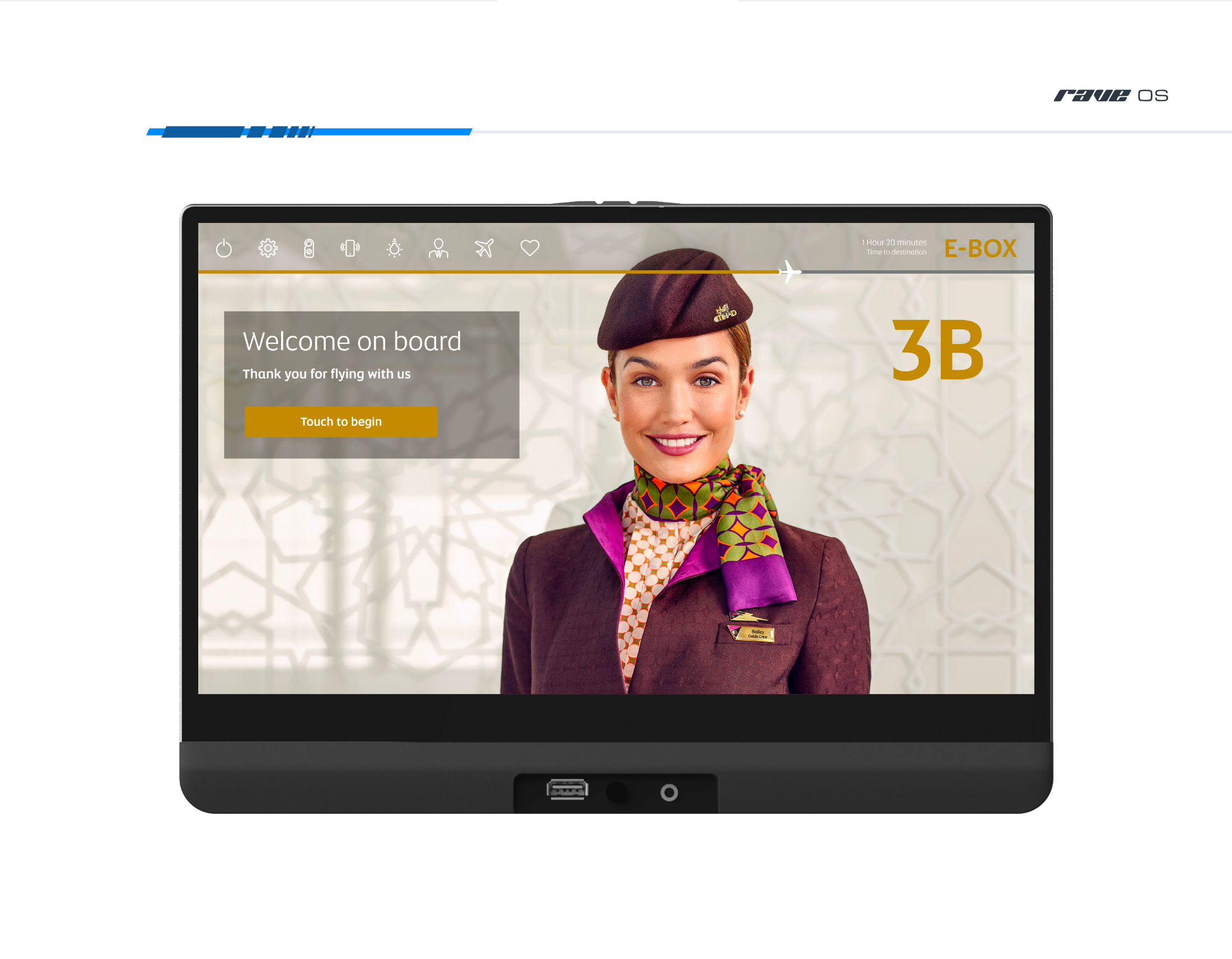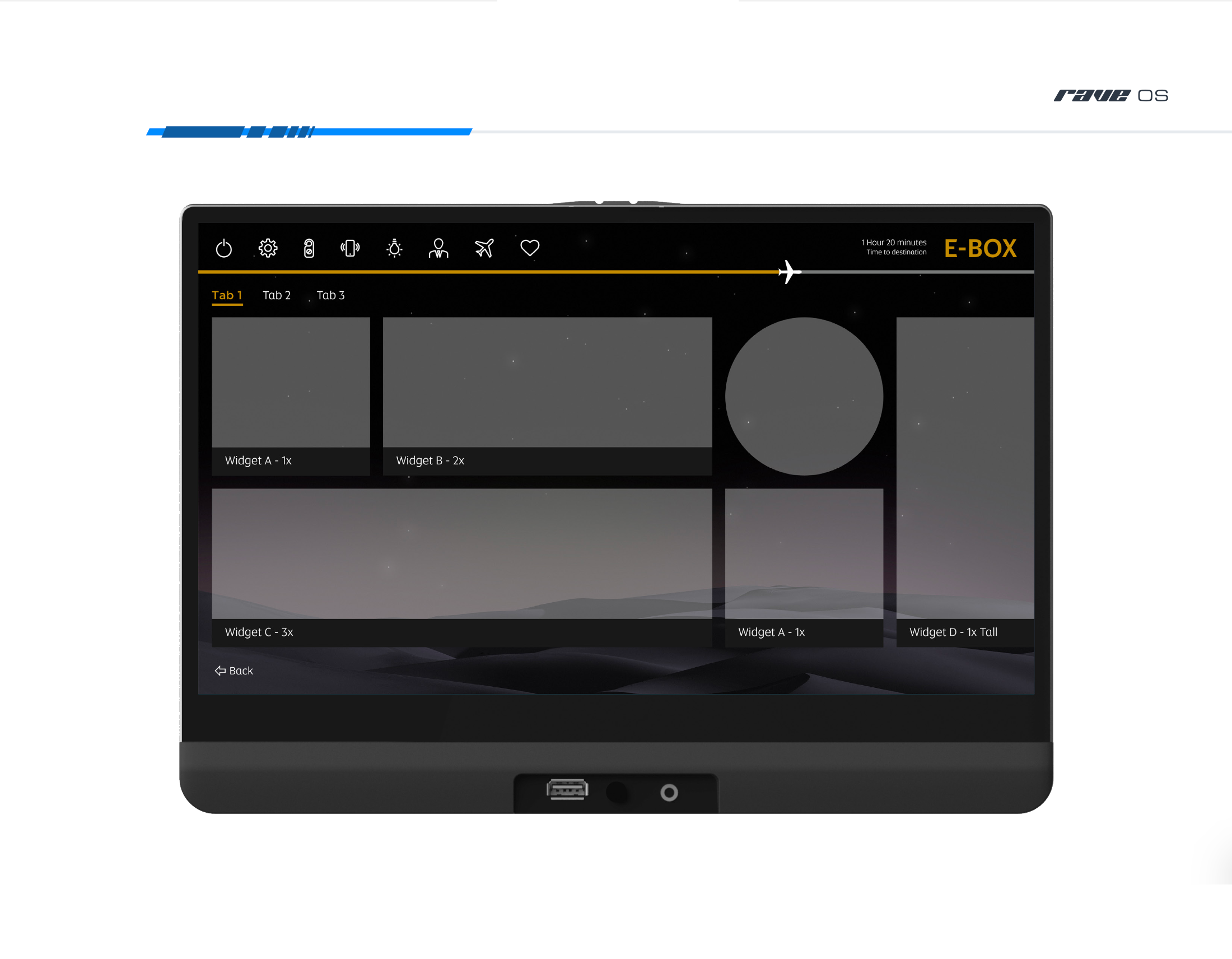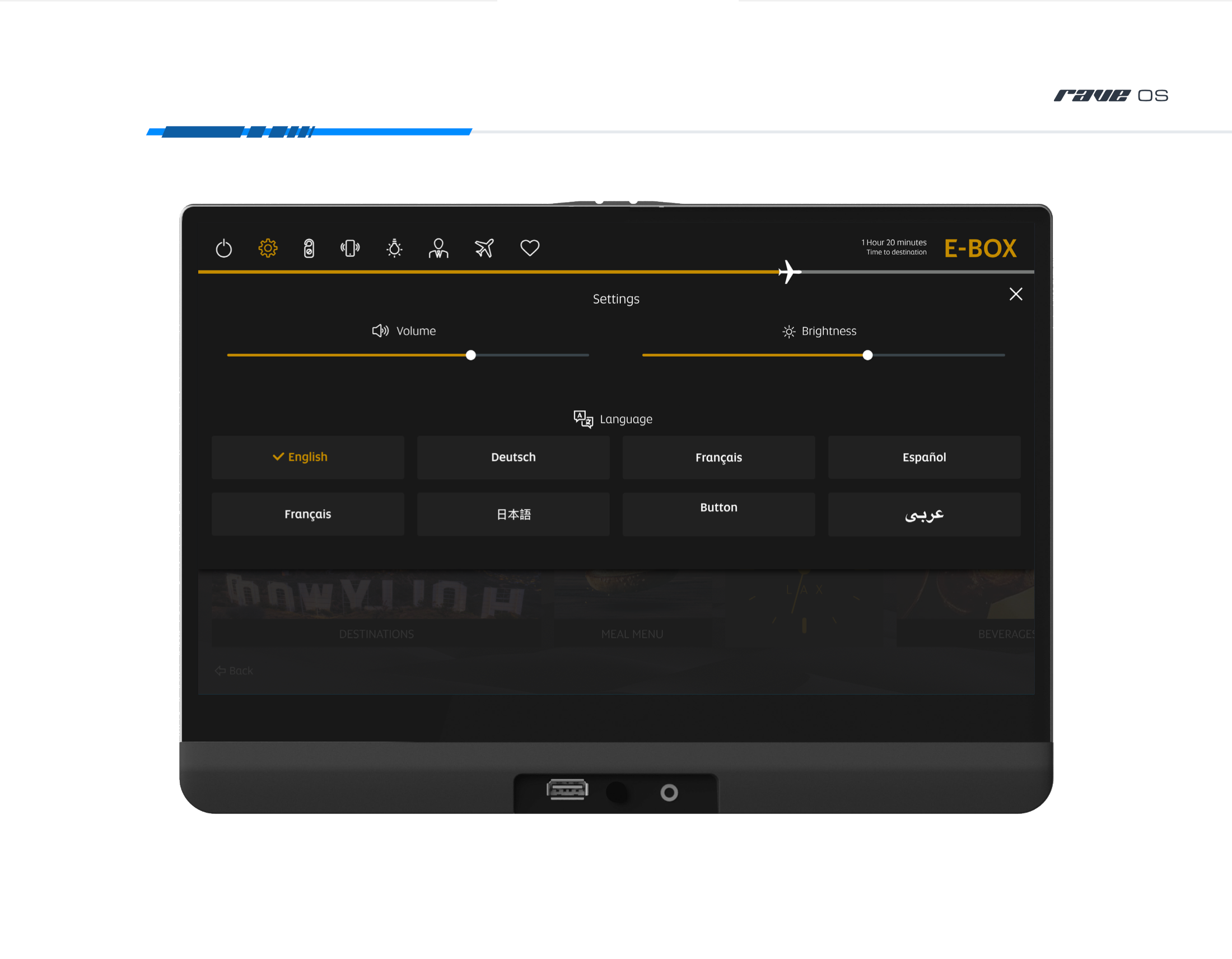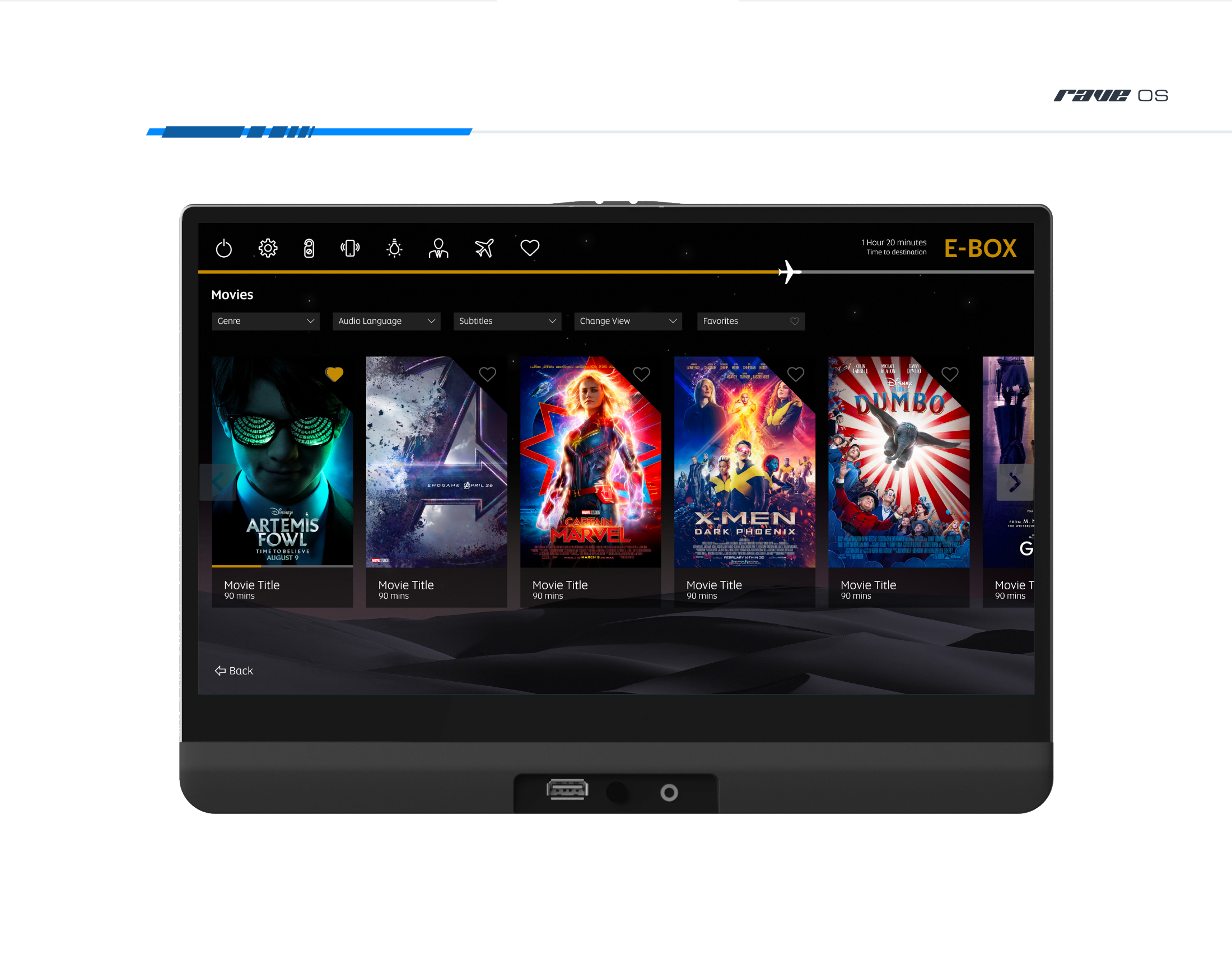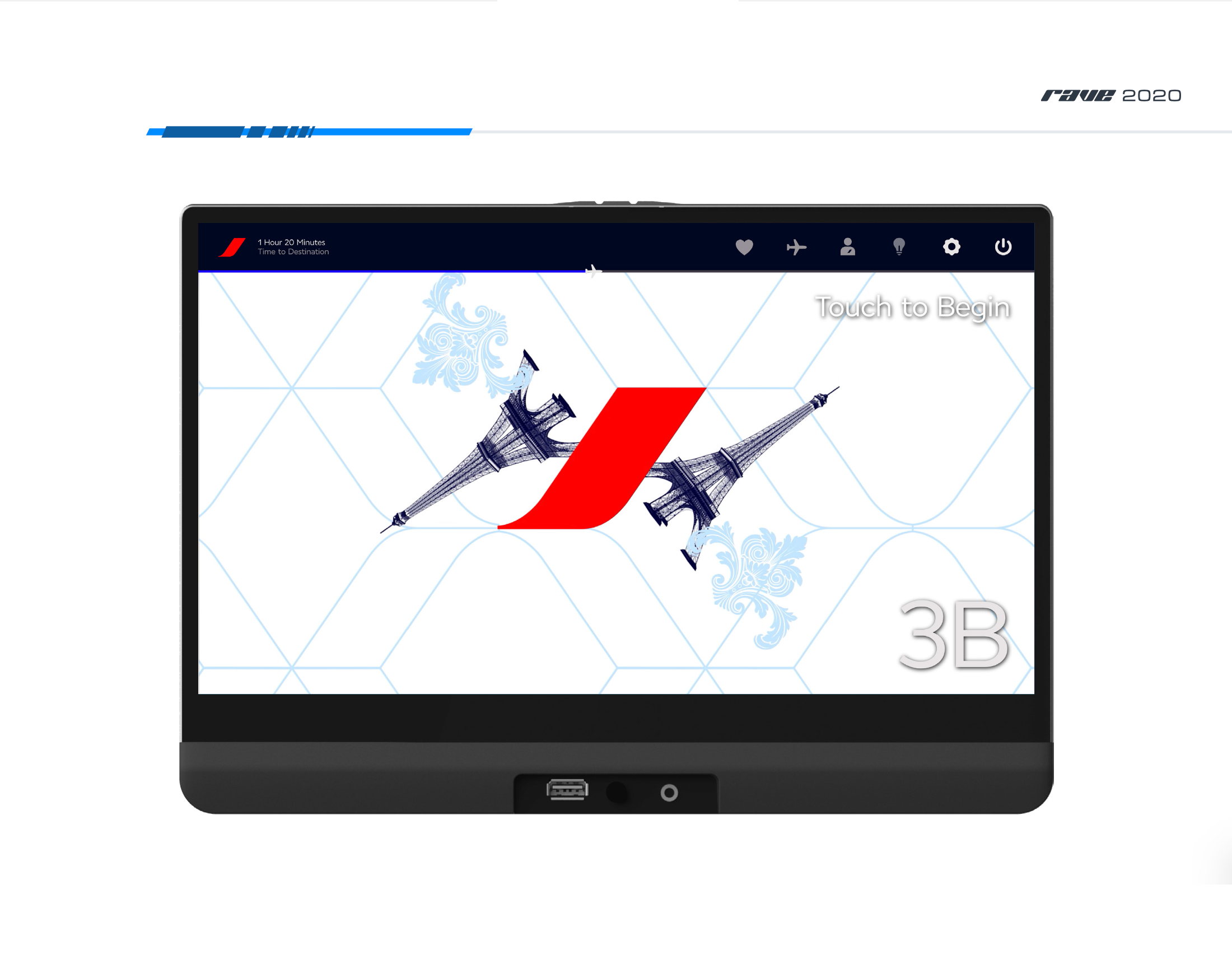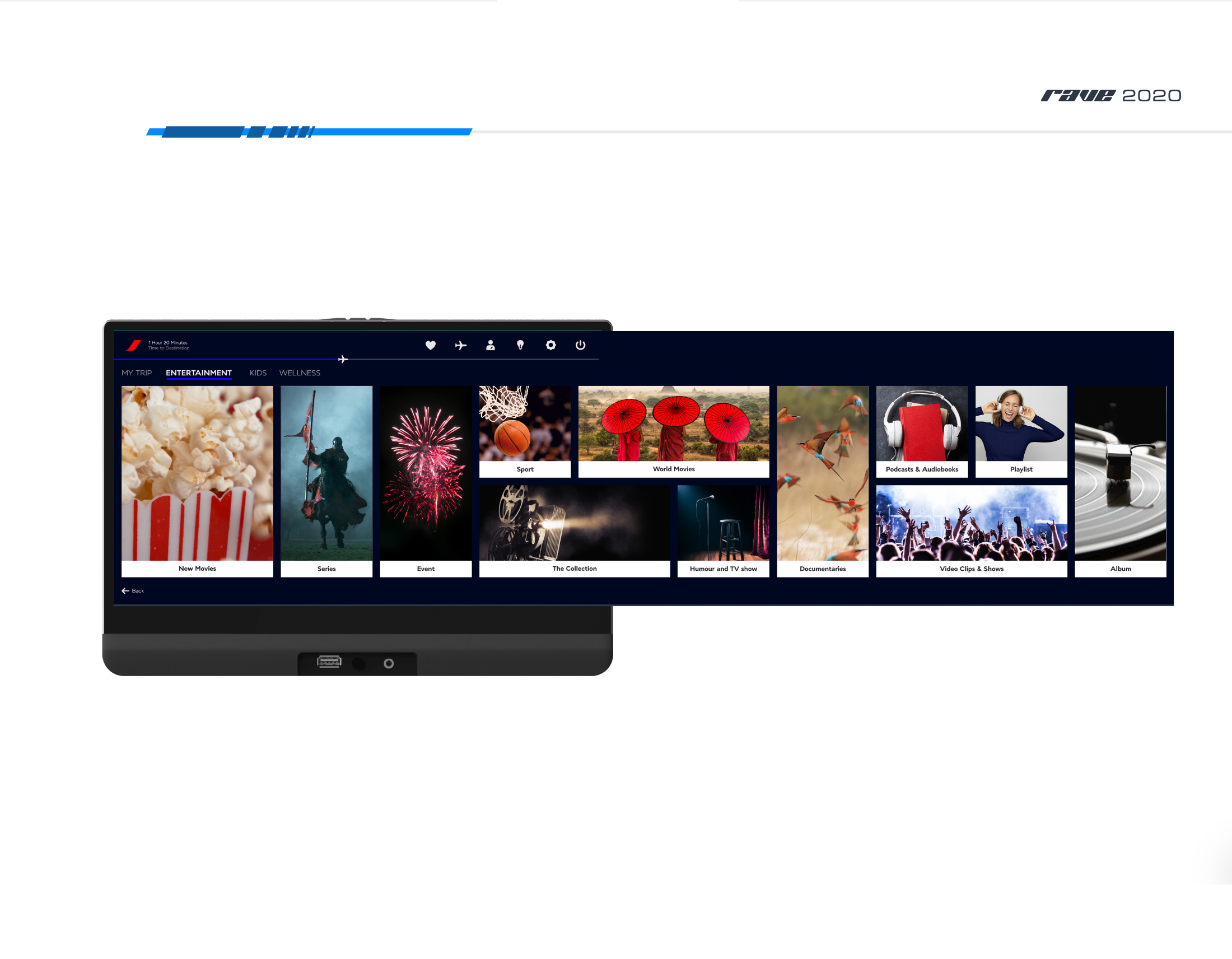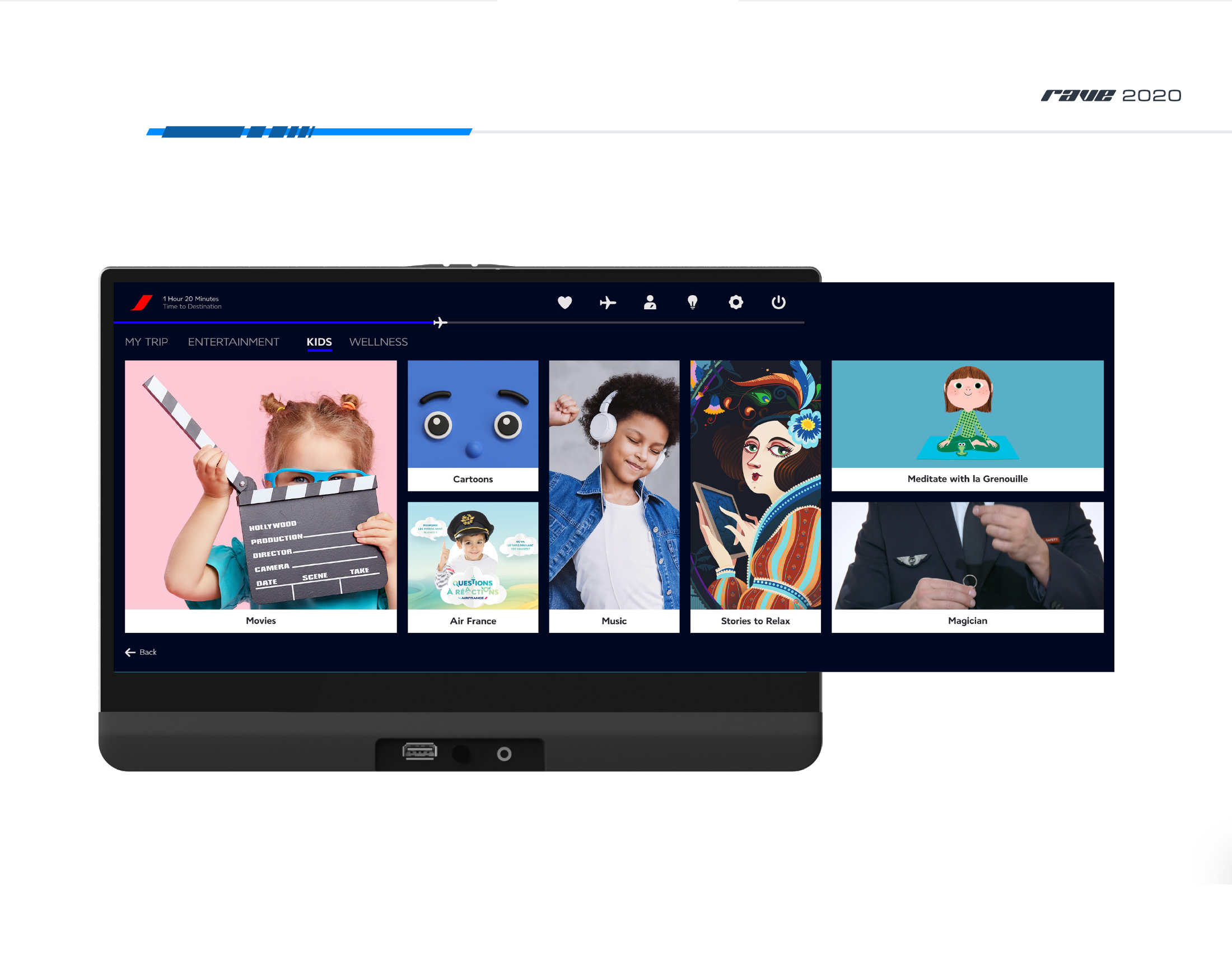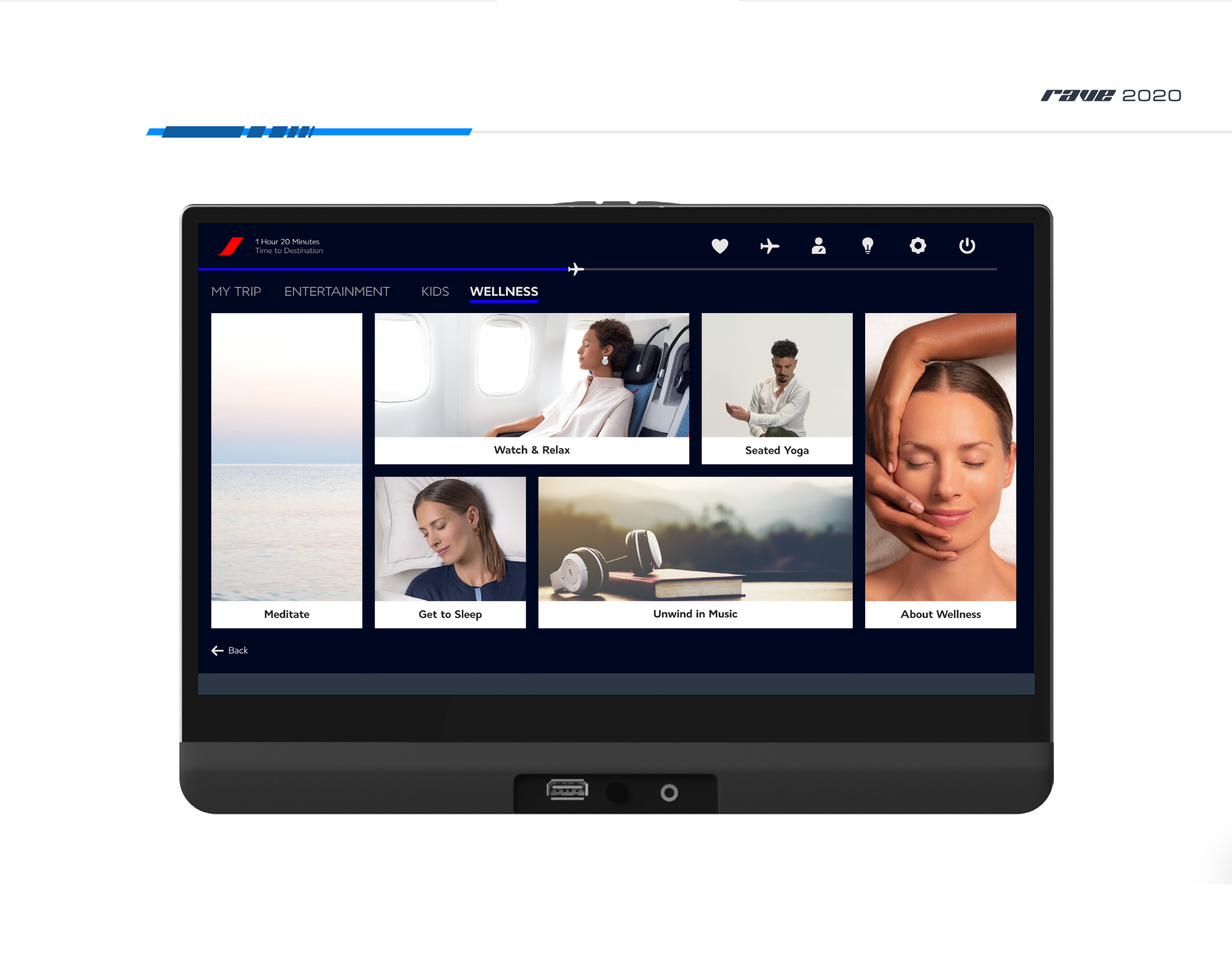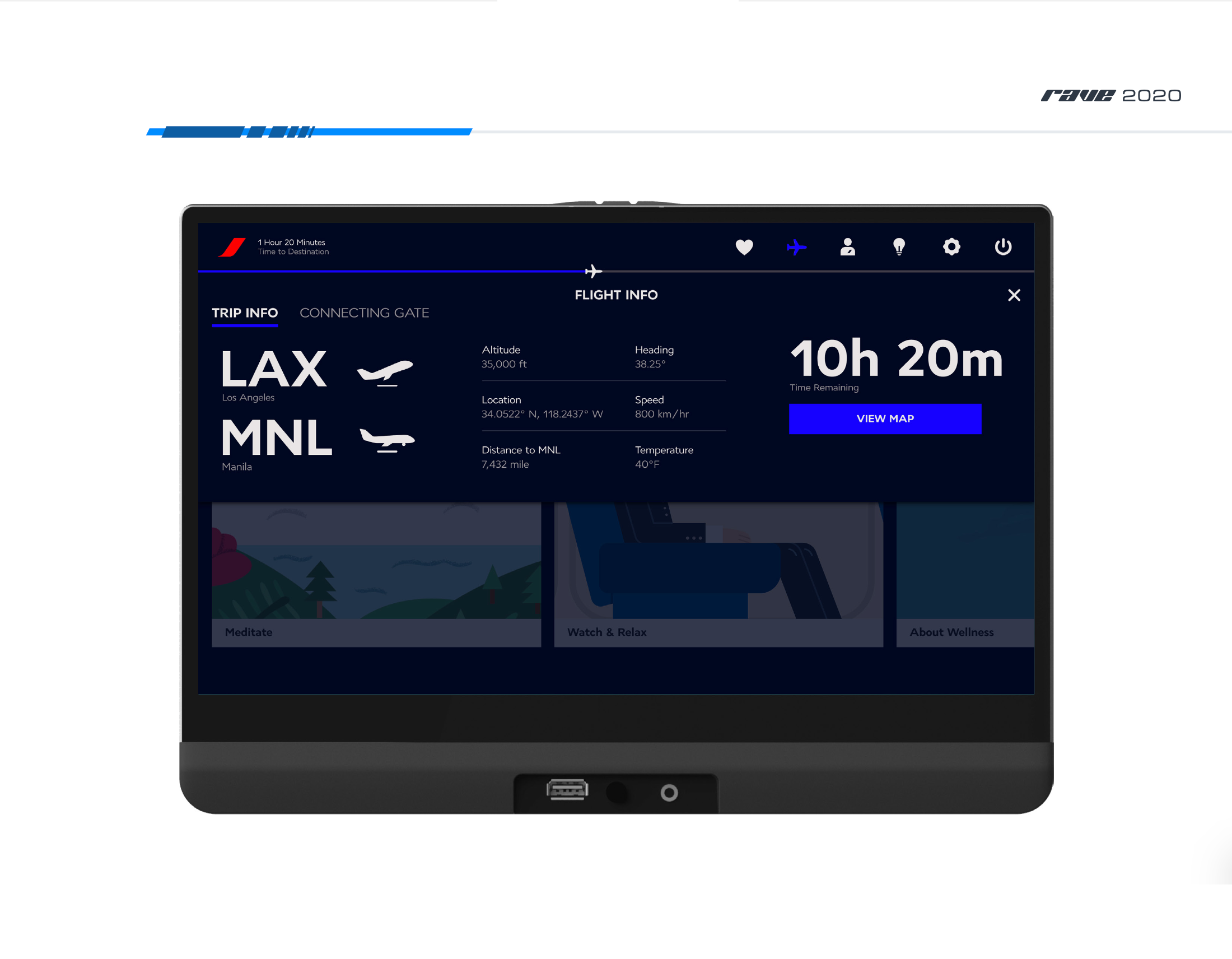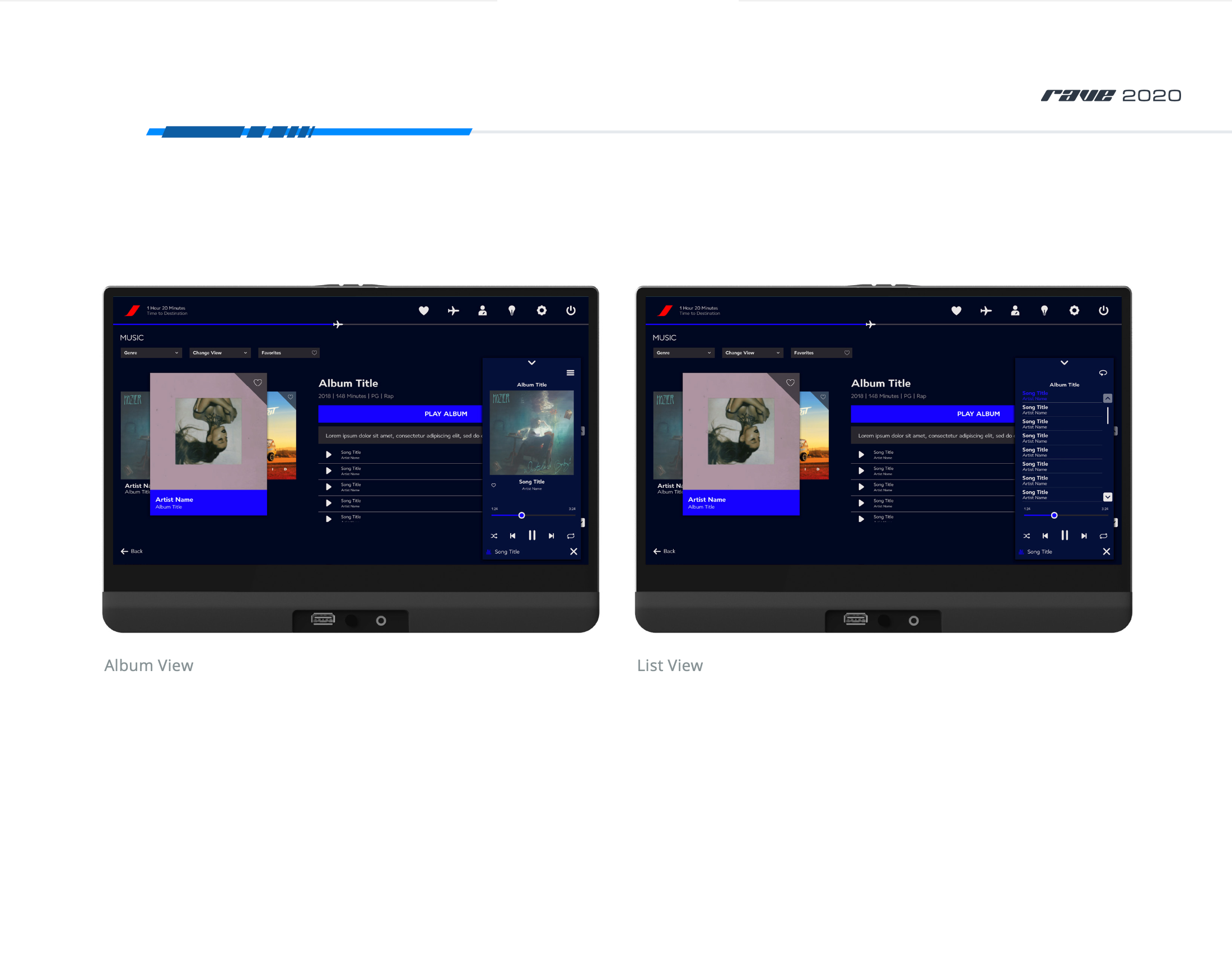RAVE OS
SPI’s Award-Nominated IFE System
The latest generation of RAVE, SPI’s inflight entertainment system (IFE) and product line. I owned the ground-up creation of RAVE OS, including core feature definition and program specifications.
Critical for winning key contracts with ANA, Lufthansa, STARLUX, and Air New Zealand, RAVE OS has since launched across 30+ international airlines and serves over 40 million users daily. It has additionally been increasing both key passenger and flight crew user metrics by ~20% in the aggregate.
SANspotter YouTube Review of STARLUX RAVE OS
“This is, hands down, the best inflight entertainment system that I’ve ever experienced in any business class seat, on any airline, anywhere in the world […] It’s the extremely well designed user interface […] which makes this feel like a very premium experience.”
The business problem
Updating a plane is notoriously difficult, disruptive to operations and very costly process for any airline. As a result, airlines rarely do a full retrofit of their seats, cabling, or software, meaning that everything is done strategically and with modularity in mind.
REMIX, the previous and longest-standing generation of RAVE, had been widely known for its reliability and fast implementation, but the crux of its success was also hurting our business opportunities as SPI began pursuing Enterprise business.
Part of REMIX’s quick, easy implementation was the limited customization of user interface layout, software feature configuration, and home screen widget functionality. In other words, any airline flying REMIX was flying the exact same product, just with a different branded look.
This strategy worked for SPI when it was a startup flexing into new business ventures, but now that we were ready to play with some serious airlines, SPI would need to scale up its strategy – without sacrificing our industry-famous reliability and ease of implementation.
Identifying the product strategy
My CEO and CMO approached me with a seemingly simple statement: Design the next generation of RAVE in 7 months.
The deadline was an Airline Committee meeting where we would be presenting our new design prototype to two different groups of important airlines: One was our Innovation Committee, a hand-selected group of 4 existing airline customers we had promised early-access for all features in order to win new aircraft programs. The second was a group of new airlines that we had not yet won business with, critical Enterprise contracts that if won, would unlock a whole new world of opportunity.
To ensure I knew exactly what needed to be addressed from a customer perspective, I wrote, scheduled, and ran a series of customer interviews with both airline’s corporate representatives (typically the IFE Program Manager) and a handful of their flight crew staff (specifically their head purser).
The results of theses interviews, along with key customer support data, confirmed a few key patterns:
The “start sequence” was a big missed opportunity for all interviewees, specifically corporate reps, and everyone wanted the most flexibility and customization on these key screens for brand visibility, advertising opportunities, and significant passenger personalization.
Introducing multitasking capabilities was a must-have. Airlines and their passengers wanted the ability to continue browsing their IFE while still being able to listen to music or, most critically, continue watching their video content.
Airlines respected that RAVE’s formula for success was some degree of out-of-the-box ready software and configuration, but they asked for me to push the boundaries here as much as possible. Not only did they want more freedom to make their IFE feel like a completely unique product, they wanted whatever solution we implemented to mean easy, fast configuration for all backend tools, a unique technological challenge for SPI.
The overall look and feel needed to not just feel modern now, but maintain its fresh look over the next 5-10 years. This included the ability to update as many design assets via content updates (rather than software updates) as possible, another unique technological challenge.
Address growing passenger and airline concerns around new technologies (at the time, no one could reliably pair passenger Bluetooth headsets to an IFE system) and new accessibility standards that were being introduced across the aerospace industry
The solution + brand new features
After running a month’s worth of deep-diving design sprints with my design and product teams, which included bringing in subject matter experts, c-suite staff and engineers, we identified a plan forward which included:
A sophisticated and extensive configuration system that would allow airlines to choose from a wider array of interface elements, feature functionality, and passenger navigation, making RAVE OS feel like a customized product without losing SPI’s formula of out-of-the-box software. This would include updating SPI’s backend tools, which would not be a simple feat.
A completely new catalog of home screen widgets, growing from REMIX’s 4 basic widget types to a whopping 10 sophisticated options, including real time world clock and departure/destination weather widgets.
Two different home screen configuration options, giving airlines a choice between the way their widget categories were surfaced and merchandised to passengers.
Introduce seemingly simple but historically difficult global design customization options, including fonts, blur vs non blur backgrounds, more extensive UI component colors, completely customizable UI icons, changing text alignment (on certain areas), rounded corners vs sharp corners, and the option of drop shadows.
Introduction of video backgrounds, which would require some tricky but well-executed behind the scenes work between the Design department and Engineering to ensure smart memory and processing trade offs were made at critical points of the user journey.
Include an intuitive Bluetooth Pairing feature for headset connection on flights, an industry-first due to conflicting bluetooth signals in a confined aircraft body.
Design a completely separate Accessibility Mode for our IFE that met industry standards, particularly for passengers with visual, auditory, and ambulatory impairments. This was especially important for Virgin Atlantic, one of our Innovation Partners.
New User Experiences
RAVE OS Standard Configuration
RAVE OS for Virgin Atlantic
RAVE OS for Etihad Airways
RAVE OS for Air France
User Engagement
-
From concept to near-final designs, I facilitated a series of guerilla user tests in and around our Brea office, including prototype usability, A/B and preference testing, to challenge early design solutions and personal biases.
Our budget and access to real airline passengers was incredibly limited, but we wanted to do our best to make informed design decisions for the next generation of RAVE. This had never been done for any other generation of the RAVE product line.
-
Through my relationship with our Airline Innovation Committee, I was able to arrange a unique opportunity around month 5 mark of the project.
We had the privilege to partner with Virgin Atlantic’s Customer Experience team to conduct one full usability test, using a pool of real UK-based users in Virgin Atlantic’s test lab. My team and I wrote the test case and script, reviewed it with the Customer Experience team, and video conferenced in to observe and help facilitate the testing.
-
Throughout our initial design sprints and deeper design/feature development, I ensured that we engaged with our Airline Innovation Committee at key touchpoints. While this was not required, it was a well-received idea I proposed to my c-suite.
We would review prototypes with our airline partners at key project milestones, integrating their feedback into future progress and eliciting trust and excitement from them.
This was also beneficial in ensuring some level of confidence that our design solutions would work for global audiences and different cultural design trends.
For example, our contacts in China were pivotal in identifying the negative reaction their market may have to a very minimalist design standard, resulting in my team and I finding unique configuration opportunities for the Chinese market.
When it was time to officially present our proposed next generation product to our Airline Innovation Committee, I gave each designer the opportunity to present to one of our 4 partners, while I took the presentations with the airlines we were bidding for alongside my c-suite staff.
With overwhelmingly positive reception across every front, our Product Department had the greenlight to begin software development of RAVE OS.
It debuted on Virgin Atlantic’s long-awaited A350 fleet and on Taiwan’s new luxury airline, STARLUX, first with their A320 fleet and most recently on their A350-900 long haul fleet. It has received rave reviews by travel influencers, won and continues to win Enterprise contracts for SPI, and dramatically improved user metrics for flight crew and passengers alike.
